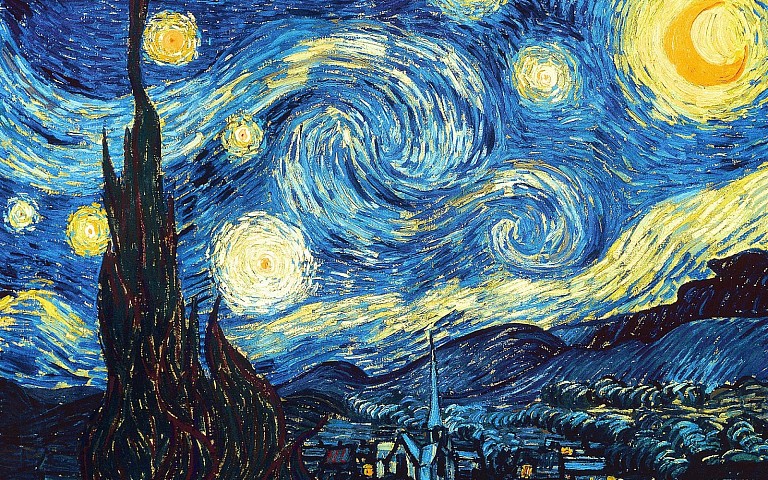
Blog: Art Engages All Our Senses
February 20, 2020 - Joy Reed Belt
Among the wonders of nature are the five senses most humans share: Vision, Hearing, Smell, Taste and Touch. These senses provide data to the part of our brain that creates our emotions. That is why listening to Harry Chapin sing “Cats in the Cradle” can make you cry. It is the reason you feel the sand and heat of the harsh desert when watching “Lawrence of Arabia.” It is why “A Tale of Two Cities” is regularly cited as one of the best-selling novels of all time. It is why it is almost impossible to look at a Denise Duong painting of a couple on a tandem bicycle with a dog perched in a wire carrier without feeling like someone is touching you. Similarly, who can be unmoved when viewing Michelangelo’s Sistine Chapel.
Just as we use all our senses when viewing art, artists use all the senses available to them to create art. For example, D.J. Lafon would often listen to opera when he painted, the composer Puccini was his personal favorite. Jim Keffer always primes his canvas with red pigment before painting. Every artist aims to relate their senses and personal experiences to the art they are creating, something that can, and does, look different to each individual. Whether it be that the artist took a walk, read a poem, lit a candle, or thought about something meaningful to them, they incorporate that experience into their artwork.
Karen Mosbacher, the Gallery’s featured artist in March and April of 2020, has a sensory condition, called Synesthesia. In which the brain links the senses together in a rare manner. This condition occurs in about four percent of the population. Those who experience Synesthesia often see colors, feel sounds, and taste shapes. Some famous Synesthesia artists include Vladimir Nabokov, Geoffrey Rush, Duke Ellington, Billy Joel, Franz Liszt, and Vincent Van Gogh. While Van Gogh seems to have been more impaired by Synesthesia, most artists adopt the condition as another gift that enables them to create.
Mosbacher herself, sees colors and shapes when she hears music. When asked about how this affects her as a painter, she simply says, “I Paint Music.” Growing up surrounded by the sounds of classical and jazz piano, her journey as an abstract and expressionist painter developed utilizing Synesthesia. She states, “working with music of different genres, as well as poetry, story, and other auditory processes, I paint what I see to create paintings full of rhythm, color, line work, texture, balance and movement.”
Artists engage all of their senses. They allow themselves to feel, to experience, to be vulnerable. In other words, “they put themselves out there,” without knowing how their work is going to be received. They do not even know with any certainty if their work will sell. Yet, artists keep creating. They keep sharing their creative thoughts, emotions and experiences. They keep trying to elicit a response. So, the next time you encounter art, in whatever form, try to engage all your senses - feel the art.
Image - Vincent Van Gogh, “The Starry Night,” 1889, Oil on Canvas, 28.7 x 36.25 in.
Back to Blogs
